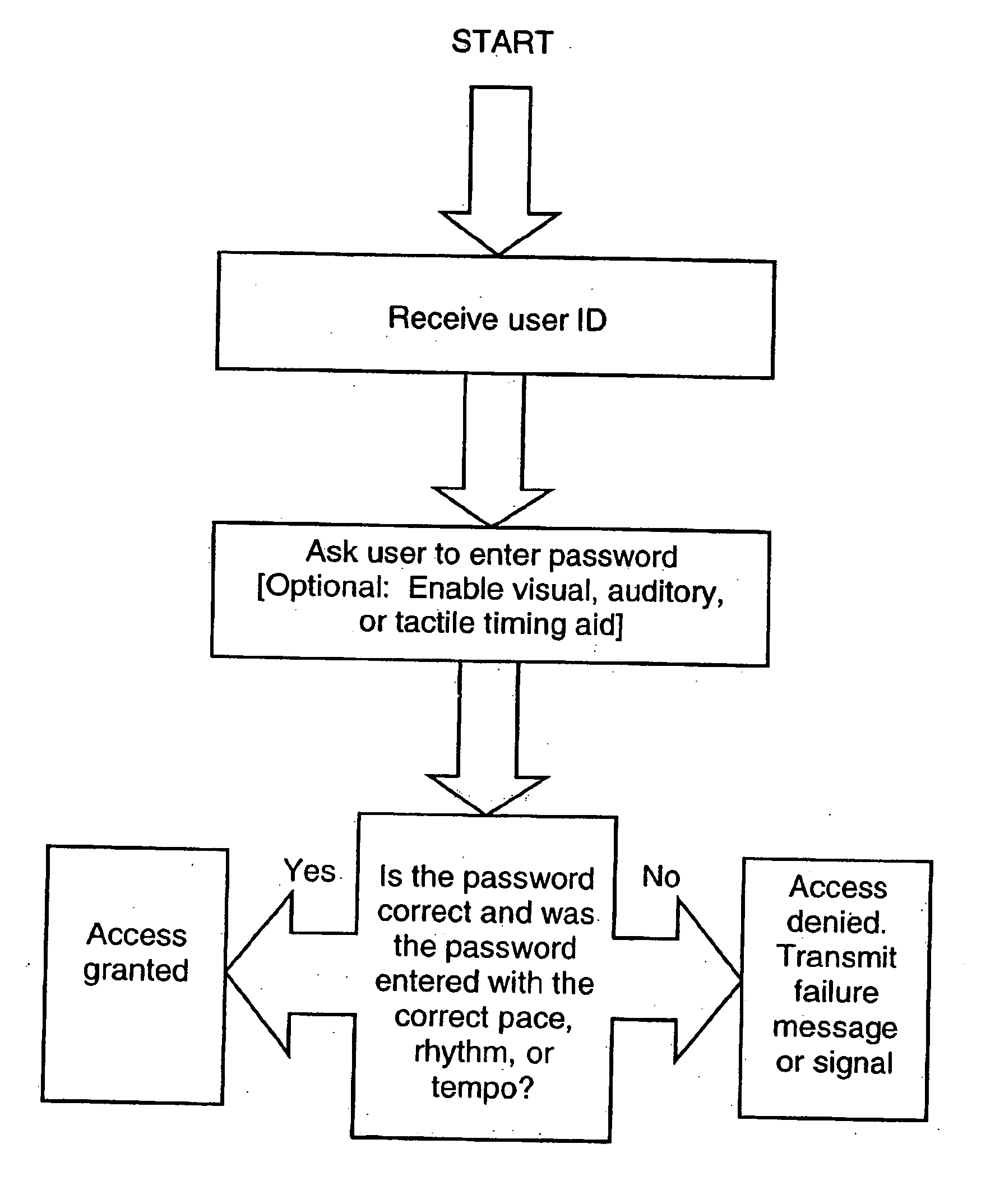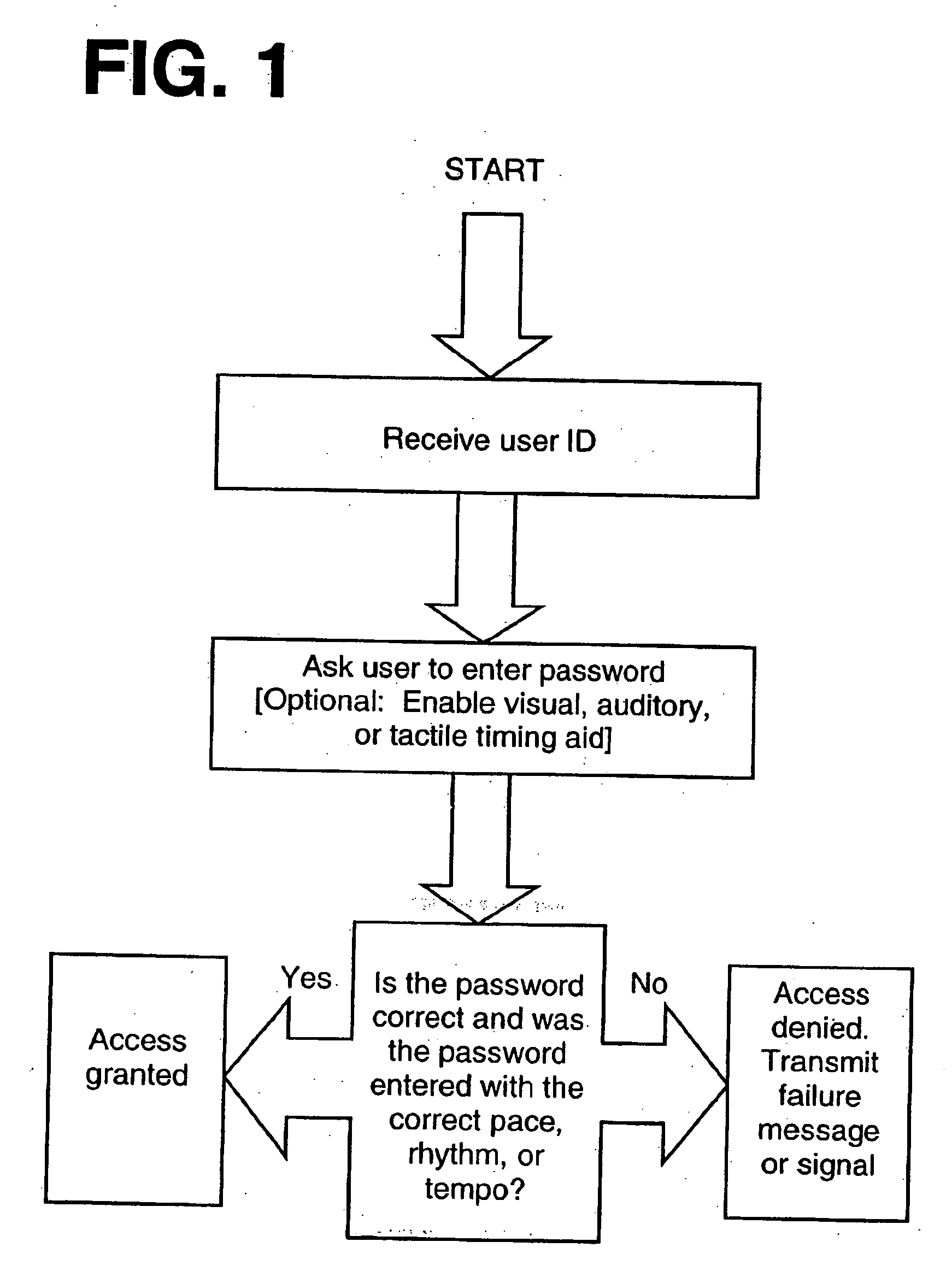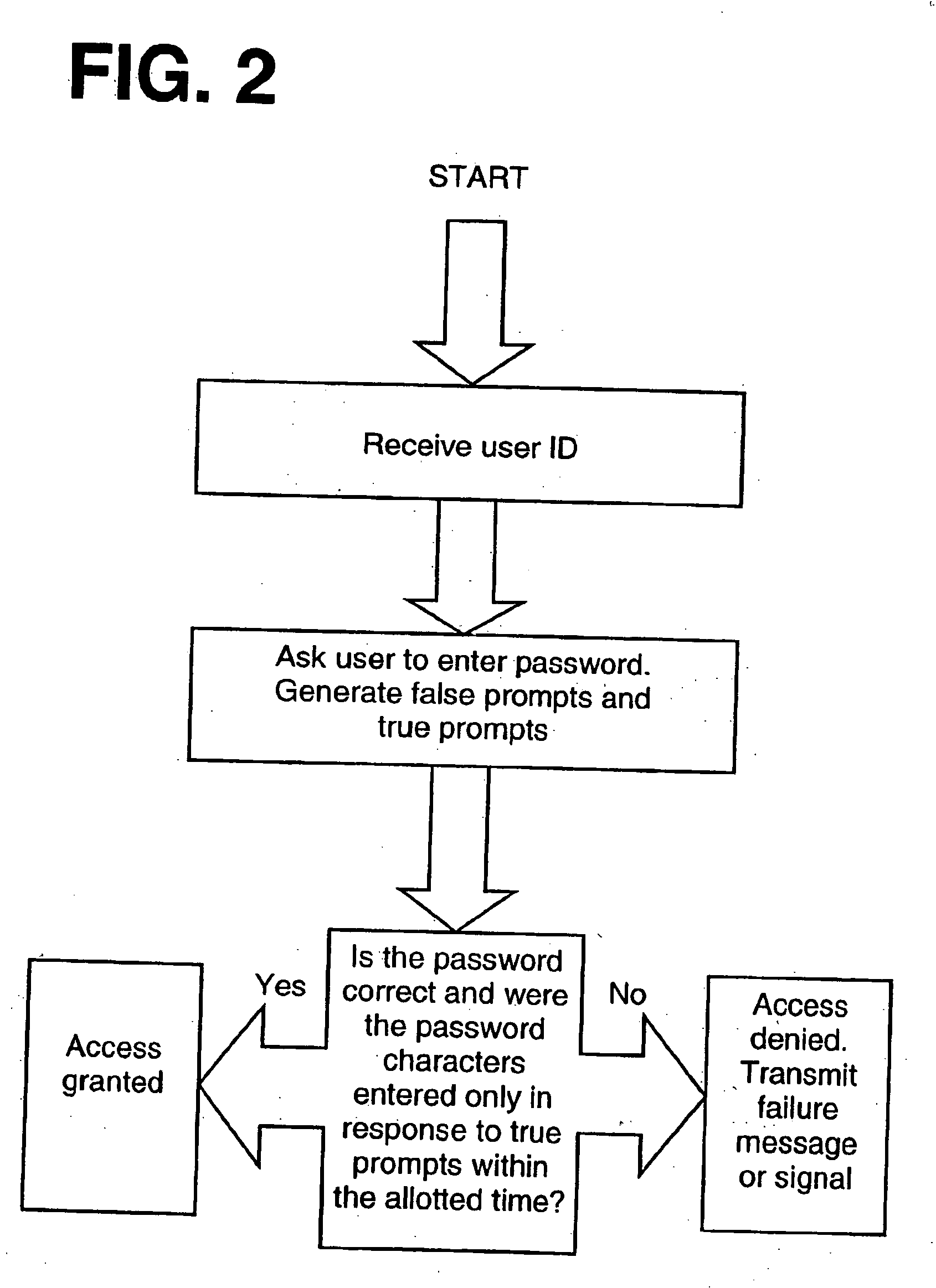System and method for user authentication with enhanced passwords
a user authentication and password technology, applied in the code field, can solve problems such as denial of access, and achieve the effects of enhancing the security of even short passwords, less taxing users, and reducing the number of users
- Summary
- Abstract
- Description
- Claims
- Application Information
AI Technical Summary
Benefits of technology
Problems solved by technology
Method used
Image
Examples
first embodiment
[0028] A simple example of the present invention is a password that consists of only a single character, such as the letter “z” entered six times in a row. When the timing element is added this simple password becomes a much more complicated code providing a greater level of protection. One possible pattern for the timing element of this password is two distinct three-keystroke combinations with a slight pause in between. The first three keystrokes are struck within a set time period (for example, a two-second period) and this entry is then followed by a pause of some predetermined length. (In this example, the pause could be between four and six seconds long.) After this pause the final three keystrokes must then be entered within a set time period (e.g., a two-second period). The pattern would thus appear something like: “zzz” (pause) “zzz”.
[0029] A variation of this same password would appear as “zz” (pause) “zz” (pause) “zz.” Another variation could consist of “zzz” (pause) “zz”...
second embodiment
[0043] This second embodiment might be preferred by users who feel more confident remembering visual, auditory, or tactile prompts as opposed to a pace, rhythm, or tempo.
[0044] The computer / program responsible for authorizing users could either store in computer memory a number of preset timing elements for passwords of different lengths and select from among these preset timing elements, or it could generate a random pace, rhythm, or tempo each time user authentication is required. Again, the selection of a timing element does not require the consent of, or input from, the user. The precise configuration of a particular system will depend upon the choices and needs of system designers.
[0045] A user of this second embodiment would first select and set a password character sequence. This password character sequence is stored by the computer / program responsible for user authentication. The user will also select certain visual, auditory, or tactile prompts that will be used in the aut...
PUM
 Login to View More
Login to View More Abstract
Description
Claims
Application Information
 Login to View More
Login to View More - R&D
- Intellectual Property
- Life Sciences
- Materials
- Tech Scout
- Unparalleled Data Quality
- Higher Quality Content
- 60% Fewer Hallucinations
Browse by: Latest US Patents, China's latest patents, Technical Efficacy Thesaurus, Application Domain, Technology Topic, Popular Technical Reports.
© 2025 PatSnap. All rights reserved.Legal|Privacy policy|Modern Slavery Act Transparency Statement|Sitemap|About US| Contact US: help@patsnap.com



